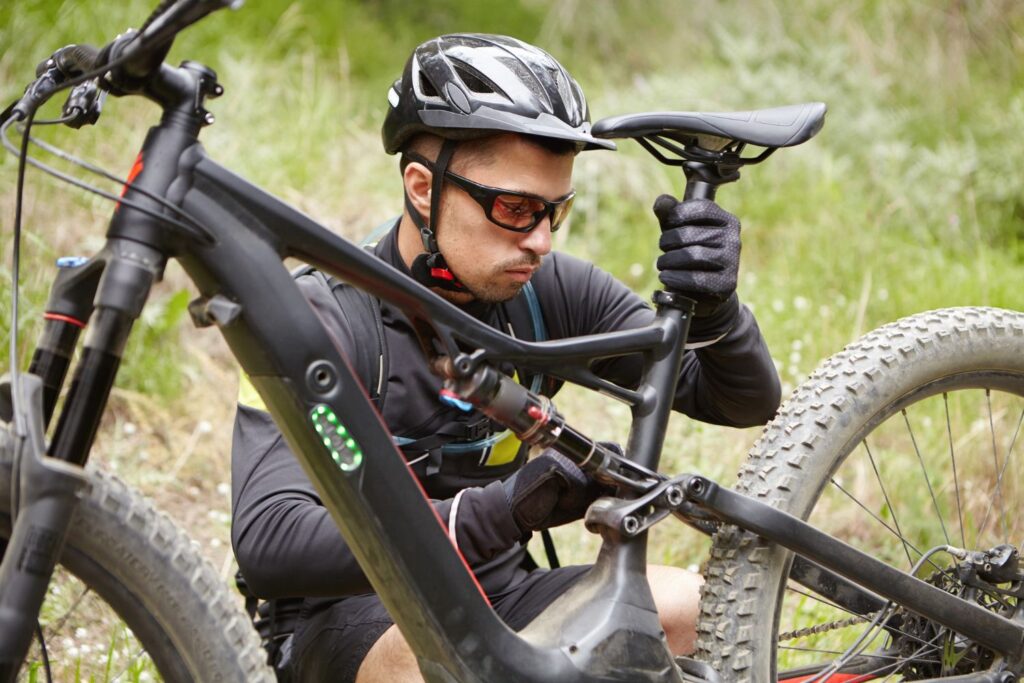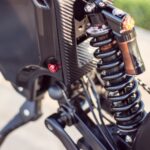Understanding Full Suspension MTBs
Full suspension mountain bikes, commonly referred to as FS bikes, come equipped with both front and rear suspension systems. This design is crafted specifically for riding in rough terrains and absorbing the shocks that come from bumpy trails. One of the biggest advantages of FS bikes is their ability to keep the wheels in contact with the ground, improving traction and control.
Key Features of Full Suspension Bikes
When you hop on a full suspension bike, you’re greeted with a range of advantages:
- Smooth Ride: The rear suspension absorbs bumps and jolts, making rides feel less punishing on uneven ground.
- Better Traction: With two points of suspension, the wheels stay in contact with the terrain, offering more grip.
- Increased Comfort: Less impact means better comfort, especially on long rides.
- Versatile Riding: Full suspension bikes are great for both downhill and technical climbs, letting you tackle a variety of trails.
However, as appealing as full suspension sounds, there are some factors to consider. They can be heavier due to the additional components, which could slightly hinder climbing efficiency. But hey, who doesn’t love the feeling of gliding over rocks like they are marshmallows?
Diving into Hardtail MTBs
On the flip side, we’ve got hardtail mountain bikes. These beauties sport a front suspension only and have a rigid rear end. Don’t underestimate a hardtail just because it sounds austere. They have their own set of strengths that can be highly beneficial for certain riders.
Why Choose a Hardtail MTB?
- Lightweight: Without the extra suspension components, hardtails tend to be lighter—a definite advantage for steep climbs.
- Efficiency: They excel on smooth terrain, allowing for greater pedaling efficiency without the bobbing that can occur on full suspension bikes.
- Cost-Effective: Generally, hardtails are more budget-friendly, so they’re a great choice for newcomers.
- Simple Maintenance: With fewer moving parts, hardtails are often easier to maintain through regular adjustments and repairs.
However, hardtails can be a bit more punishing on rough terrain. If you hit a big rock or a root, brace yourself for the shockwave to come up through the frame. But hey, a little adrenaline keeps the ride exciting, right?
Deciding Factors for Choosing Your MTB
Okay, so you’re probably wondering: how do I decide between the two? Here are some essential factors to take into account:
Terrain Types
The type of terrain you’ll ride most frequently plays a significant role in your decision. If you often tackle challenging trails with loose rocks, mud, or hefty drops, a full suspension bike might be your best bet. On the contrary, if you’re riding smooth, flowy singletracks, a hardtail could serve you just fine.
Riding Style
Your personal riding style is equally important. If you find joy in the adrenaline of descending steep hills and navigating technical sections, full suspension allows you to ride with more confidence. If you’re a cross-country enthusiast who loves speed and efficiency, hardtails shine in these situations.
Budget Considerations
Let’s talk about the elephant in the room—cost. Generally, you’ll find hardtails are more affordable. If you’re just getting into mountain biking, starting with a hardtail can ensure you get the most bang for your buck. Once you’re hooked, you could always upgrade to a full suspension bike later. However, if you have the budget splurge on a versatile FS bike, it might be worth it in the long run.
Comfort and Riding Experience
Your comfort level matters, too. While hardtails can be a fantastic choice for many riders, those who prioritize a plush ride over versatility may enjoy the overall experience of full suspension bikes more. There’s something magical about gliding through bumpy trails without feeling like you’re in a wrestling match with your bike.
Personal Experience
I remember when I transitioned from a hardtail to a full suspension bike. The difference was night and day. The first time I went down a technical trail that once left me battered and bruised, I felt like I was floating. It was exhilarating. But I also cherish the thrill of riding my hardtail on smooth trails where I could just focus on speed. Both have their own unique charms.
Common Misconceptions
Full Suspension is Always Better
A common myth is that full suspension bikes outshine hardtails in every scenario. While they excel in challenging terrains, not every trail demands a full suspension. Hardtails can outperform in specific situations, especially on smooth trails.
Hardtails are Only for Beginners
There’s a perception that hardtails are for novices only, but many experienced riders still prefer them for cross-country racing and fast, flowy trails. It’s all about personal preference and riding style.
Maintenance is a Hassle
Some believe that full suspension bikes are too complex and require constant upkeep, which can indeed be true for some. But with a bit of knowledge and regular checks, both bike types can be maintained without becoming a full-time job.
Final Thoughts
Ultimately, the choice between full suspension and hardtail mountain bikes boils down to your unique riding preferences, terrain, and budget. Both options offer great experiences tailored to different needs. If you’re just starting, why not test ride both and see which feels right under you?
In my opinion, there’s a beauty in both worlds. Full suspension bikes offer comfort and control, while hardtails provide speed and efficiency. Finding the right balance for you is what matters most. Happy biking!






